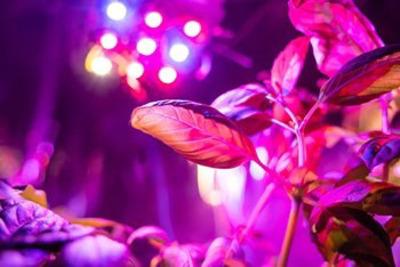Step-by-Step Guide: Adding UV Lights to the Greenhouse for Plant Growth
by EkanshAgarwal01 in Workshop > Home Improvement
260 Views, 0 Favorites, 0 Comments
Step-by-Step Guide: Adding UV Lights to the Greenhouse for Plant Growth
.jpg)
UV lights can enhance plant growth by simulating natural sunlight and promoting photosynthesis. Use this sheet link to know which type of home plants you can grow at your home (LINK). Here's how to incorporate UV lights into your smart greenhouse setup:
Supplies
- UV-A and UV-B LED Lights:
- Ensure the spectrum is plant-safe and suitable for growth.
- UV Light Timer:
- Automates light duration (6–8 hours/day recommended).
- ESP32 Integration (Optional):
- Connect UV lights to ESP32 for remote control and automation via the same system.
- Power Supply:
- Use a solar-powered battery or AC adapter.
Understanding UV Light Requirements
UV Light Types:
- UV-A (315–400 nm): Promotes photosynthesis and plant growth.
- UV-B (280–315 nm): Improves plant stress resistance and secondary metabolite production.
- Avoid UV-C (100–280 nm) as it can be harmful to plants and humans.
Intensity:
- Use low to moderate UV-A and UV-B light intensities to prevent plant damage.
Wiring and Installation
UV Light Placement:
- Install UV lights above the plants, at least 2-3 feet from the tallest plant.
- Distribute lights evenly for uniform coverage.
Connecting UV Lights to Power:
- Connect UV lights to a 12V or 24V DC power supply or integrate with your solar-powered system.
- Use a relay module if you want to automate the UV lights with ESP32.
Connecting to ESP32 (Optional):
- Connect the relay controlling UV lights to an available GPIO pin on ESP32.
Programming for Automation
Scheduling UV Light Usage
Duration:
- Use UV lights for 6–8 hours per day during daylight hours.
Timer or Automation:
- Use a smart plug with a timer or automate the lights via ESP32 and a relay.
Safety Measures
- Protect Plants:
- Monitor plant response to UV light. Reduce duration if leaves show signs of stress.
- Protect Yourself:
- Install a shield or cover to prevent direct UV exposure to humans.
Integration With Solar Power
Power Supply:
- Connect UV lights to the same solar battery system powering other devices.
Energy Management:
- Use a solar charge controller to optimize power distribution.
Final Setup Summary
- Install UV-A and UV-B lights above plants.
- Automate UV lights using a timer or ESP32.
- Use solar panels to power the lights and other greenhouse systems.
- Monitor plant health and adjust UV intensity or duration as needed.
This setup will ensure optimal plant growth while maintaining energy efficiency and automation in your smart greenhouse. Let me know if you’d like help sourcing specific components or optimizing the design further!